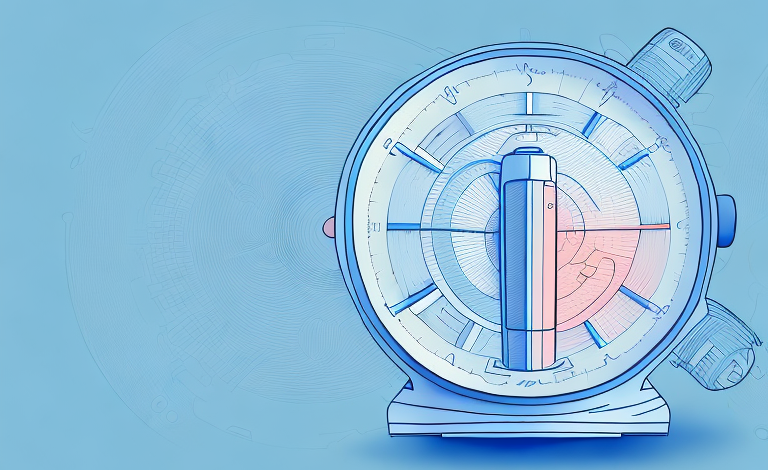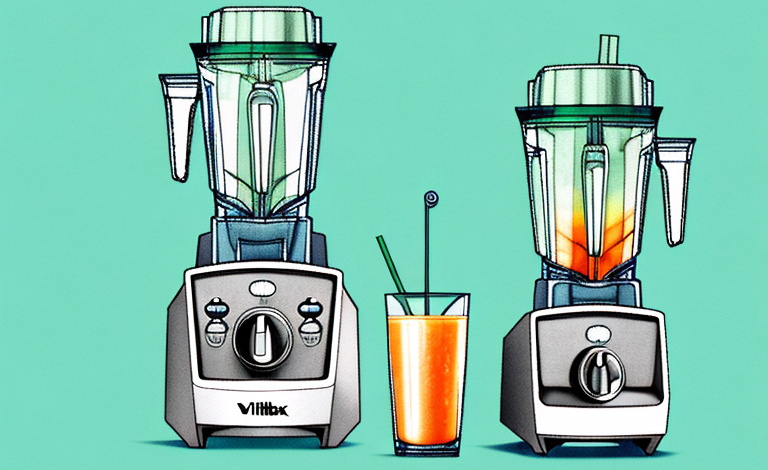Blenders are an essential kitchen appliance for many households, used to prepare anything from smoothies to sauces to purees. When you purchase a blender, you want to be sure that it will last for a long time, and that your investment will be worth it. But how long should a blender last? Let’s explore the different factors that determine a blender’s lifespan and what you can do to ensure that it lasts as long as possible.
Factors that determine the lifespan of a blender
The lifespan of a blender can vary significantly depending on a few key factors.
- Mechanical components: Quality of the motor, blade, and other mechanical components play a crucial role in determining a blender’s lifespan.
- Frequency of use: The more you use your blender, the more wear and tear it will experience.
- Cleaning and maintenance: Cleaning your blender after each use and performing regular maintenance can help extend its lifespan.
- Brand and model: The brand and model of your blender can have an impact on its lifespan. Generally, higher-end blenders tend to last longer due to their higher-quality materials and components.
Another factor that can affect the lifespan of a blender is the type of ingredients that are being blended. Blending hard or frozen ingredients, such as ice or nuts, can put more strain on the motor and blades, potentially shortening the lifespan of the blender.
Additionally, the environment in which the blender is used can also play a role in its lifespan. Blenders that are used in humid or dusty environments may experience more wear and tear, and may require more frequent cleaning and maintenance to keep them running smoothly.
Signs that your blender is wearing out
While blenders can last for a long time with proper maintenance, there are some signs to look out for that indicate that your blender may be wearing out:
- Noise: A blender that has become louder than usual or is making unusual noises may be experiencing mechanical wear and tear.
- Weaker performance: If your blender is struggling to blend ingredients, it could be a sign that the motor or blades are wearing out.
- Cracks or leaks: Over time, the pitcher or blade assembly can crack, leading to leaks or a loss of blending effectiveness.
It’s important to note that using your blender for tasks it wasn’t designed for can also contribute to wear and tear. For example, blending ice or frozen fruit on a regular basis can put a strain on the motor and blades, causing them to wear out faster. To extend the life of your blender, make sure to use it only for its intended purposes and avoid overloading it with too many ingredients at once.
How to properly maintain your blender for longevity
Proper maintenance is essential to ensure that your blender lasts as long as possible. Here are some tips:
- Clean your blender regularly: After each use, rinse the pitcher, lid, and blade assembly with warm water and soap. If necessary, use a brush to remove any stubborn food particles.
- Perform regular maintenance: Check your blender’s user manual for instructions on how to perform regular maintenance, such as tightening screws or lubricating the motor.
- Don’t overload your blender: Be mindful of the maximum capacity of your blender, and don’t overload it with too many ingredients at once.
- Store your blender properly: Store your blender in a dry place, and make sure that the pitcher and blade assembly are completely dry before storing.
Aside from the tips mentioned above, there are other ways to ensure that your blender stays in good condition. One of these is to use it properly. Make sure that you follow the instructions on how to use your blender, and avoid using it for tasks that it is not designed for. For example, if your blender is not designed for crushing ice, don’t use it for that purpose.
Another way to maintain your blender is to replace its parts when necessary. Over time, the blades and other parts of your blender may become dull or damaged, which can affect its performance. If you notice that your blender is not working as well as it used to, consider replacing its parts. You can usually find replacement parts online or at your local appliance store.
The impact of frequency of use on blender lifespan
The more you use your blender, the more wear and tear it will experience, and the shorter its lifespan will be. However, even if you use your blender frequently, proper cleaning and maintenance can help extend its lifespan. If you use your blender every day, plan on replacing it every 3-5 years.
It’s important to note that the type of ingredients you blend can also affect the lifespan of your blender. Blending hard or frozen ingredients, such as ice or nuts, can put more strain on the motor and blades, causing them to wear out faster. To minimize this, consider using a high-powered blender specifically designed for tough ingredients.
Another factor to consider is the brand and quality of your blender. Investing in a high-quality blender from a reputable brand can often result in a longer lifespan, even with frequent use. Additionally, some brands offer warranties or replacement parts, which can further extend the life of your blender.
High-end vs. low-end blenders: Which lasts longer?
Higher-end blenders tend to last longer than lower-end models due to their higher-quality materials and construction. While high-end blenders may be more expensive initially, they can be worth the investment if you plan on using your blender frequently and want it to last for a long time.
However, it’s important to note that proper maintenance and care can also greatly impact the lifespan of a blender. Regular cleaning, avoiding overfilling the blender, and not using it for tasks it’s not designed for can all help extend the life of your blender, regardless of its price point.
Common blender problems and how to troubleshoot them
Even with proper maintenance, you may experience some common blender problems over time. Here are some troubleshooting tips:
- Blender won’t turn on: Check that the blender is properly plugged in, and that the power outlet is functioning. If the blender still won’t turn on, there may be an issue with the motor, and you should contact the manufacturer for repair or replacement.
- Blender is leaking: Check that the blade assembly is securely screwed onto the pitcher. If the pitcher or blade assembly is cracked, it may need to be replaced.
- Blender is making unusual noises: Check that the blender is firmly seated on a level surface, and that there are no foreign objects stuck in the blades. If the noise persists, there may be an issue with the motor.
Another common problem with blenders is that they may not blend ingredients evenly. This can be caused by overloading the blender, using dull blades, or not adding enough liquid. To troubleshoot this issue, try blending smaller batches of ingredients, sharpening the blades, or adding more liquid to the mixture. If the problem persists, it may be time to invest in a higher quality blender with more powerful blades.
When to repair or replace your blender
If your blender is experiencing some of the issues mentioned above, it may be time to repair or replace it. If your blender is relatively new and still under warranty, contact the manufacturer for repair or replacement options. If your blender is older and no longer under warranty, it may be more cost-effective to replace it rather than to repair it.
However, before making a decision, consider the extent of the damage. If the issue is minor and can be fixed with a simple repair, it may be worth repairing the blender instead of replacing it. On the other hand, if the damage is extensive and affects the performance of the blender, it may be better to invest in a new one.
Additionally, if you use your blender frequently and rely on it for daily use, it may be worth investing in a high-quality blender that is built to last. While these blenders may be more expensive upfront, they often come with longer warranties and are less likely to require frequent repairs or replacements.
The role of warranty in ensuring the durability of a blender
The warranty provided by the manufacturer can play a significant role in ensuring the longevity of your blender. Be sure to read the warranty carefully and understand what it covers and for how long. Some warranties may cover only certain parts or defects, while others may offer more comprehensive coverage. If your blender experiences any issues while under warranty, contact the manufacturer for repair or replacement options.
It is important to note that the warranty is not the only factor that determines the durability of a blender. Proper maintenance and usage can also greatly impact the lifespan of the appliance. Regularly cleaning the blender and using it according to the manufacturer’s instructions can help prevent wear and tear on the motor and blades.
Additionally, choosing a blender with high-quality materials and construction can also contribute to its durability. Look for blenders made with sturdy materials such as stainless steel or high-grade plastic. Consider the design and construction of the blender, including the strength of the blades and the power of the motor, to ensure that it can handle frequent use and tough ingredients.
Top-rated blenders with the longest lifespan
If you’re in the market for a new blender and want to ensure that it will last for a long time, consider one of the following top-rated models:
- Vitamix 5200: This high-end blender has a powerful motor and is made with high-quality materials. Many users report that their Vitamix blenders have lasted for 10 years or more with proper maintenance.
- Blendtec Designer Series: Another high-end option, the Blendtec Designer Series is known for its durability and versatility. It features a powerful motor and is made with high-quality materials.
- Oster Versa Pro: This mid-range blender features a powerful motor and durable stainless steel blades. It is designed to last for many years with proper maintenance.
Overall, the lifespan of a blender can vary significantly depending on several factors. By properly maintaining your blender, being mindful of its maximum capacity, and investing in a high-quality model, you can ensure that your blender will last for as long as possible.
When it comes to maintaining your blender, there are a few key things to keep in mind. First, always make sure to clean your blender thoroughly after each use. This will help prevent any buildup of food or debris that could damage the blades or motor over time. Additionally, be sure to use your blender within its recommended capacity. Overloading the blender can put unnecessary strain on the motor and cause it to wear out more quickly.
Finally, it’s worth noting that while high-end blenders like the Vitamix and Blendtec are known for their durability, they can also be quite expensive. If you’re on a budget, there are still plenty of affordable blenders on the market that can last for several years with proper care. Look for models with sturdy construction and powerful motors, and be sure to read reviews from other users to get a sense of how long the blender is likely to last.



